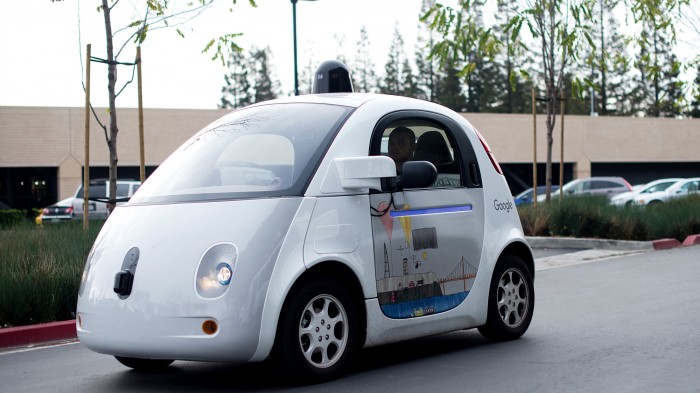Google Puts the Brakes on Its Autonomous Bubble Car
Google looks to be making a U-turn on its plans to create a fully autonomous car.
Last year, the company unveiled its vision of the future of autonomous cars: small, bubble-shaped vehicles without steering wheels or pedals. Fast-forward 18 months, though, and now a report by the Information (paywall) suggests that the company is putting that plan on hold. Instead, it will work with automakers to develop more conventional autonomous cars.
The news follows the departure of the project’s technical lead, Chris Urmson, earlier this year. Urmson was apparently a keen advocate of the control-free concept. But according to the New York Times, the former Carnegie Mellon University researcher struggled to see eye-to-eye with the former head of Hyundai’s American division, John Krafcik, who was appointed CEO of the autonomous-car project last year.

With Urmson gone—and apparently starting his own autonomous-car venture—the project’s ambitions have been reined in, reportedly by Alphabet’s CEO, Larry Page, and CFO, Ruth Porat. Perhaps we shouldn’t be surprised: last week, Bloomberg noted that Porat has been tightening budgets on Google research projects, killing ones that don’t pass muster with Page in order to focus on commercializing the most promising initiatives.
Instead of building its adorable visions of the future, then, Google will instead double down on projects carried out in collaboration with automakers, the Information claims. In particular, it will turn its attention to an ongoing project with Fiat Chrysler to build autonomous hybrid Pacifica minivans. The vehicles may even be used in a robotic taxi scheme, an idea that the company is reportedly exploring for launch in 2017.
Earlier this year, Krafcik said that the autonomous-car project was getting set to graduate from a project beneath Google’s X moonshot umbrella to become its own independent company. It looks as though that transition is going to come with a significant scaling back on ambition in an effort to achieve a commercial reality.
(Read more: The Information, Recode, “Why Google’s Self-Driving Bubble Cars Might Catch On,” “Alphabet’s Self-Driving-Car Wizard Picked a Great Time to Quit”)
Keep Reading
Most Popular
Large language models can do jaw-dropping things. But nobody knows exactly why.
And that's a problem. Figuring it out is one of the biggest scientific puzzles of our time and a crucial step towards controlling more powerful future models.
The problem with plug-in hybrids? Their drivers.
Plug-in hybrids are often sold as a transition to EVs, but new data from Europe shows we’re still underestimating the emissions they produce.
How scientists traced a mysterious covid case back to six toilets
When wastewater surveillance turns into a hunt for a single infected individual, the ethics get tricky.
Google DeepMind’s new generative model makes Super Mario–like games from scratch
Genie learns how to control games by watching hours and hours of video. It could help train next-gen robots too.
Stay connected
Get the latest updates from
MIT Technology Review
Discover special offers, top stories, upcoming events, and more.